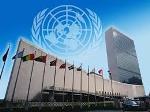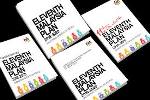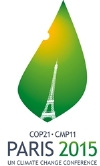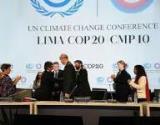Malaysia
Published on Mon, 2020-05-11 11:02
The Coronavirus Global Response pledging event on 4 May celebrated raising 7.4 billion euro for the collaborative development of vaccines, treatment and diagnostics, but there is lack of clarity on ensuring equitable access and the role of the World Health Organization (WHO). The European Commission pledged 1.4 billion euro, while other leading contributors included France (510 million euro), Germany (525 million), Japan (762 million), Spain (125 million), Canada (551 million), Norway (188 million), UK (441 million) and Italy (71.5 million). The USA was conspicuously absent. |
Published on Tue, 2020-04-14 17:03
SUNS - South North Development Monitor |
Published on Fri, 2020-03-27 08:50
The United Nations Secretary-General Antonio Guterres on 25 March launched a US$2 billion coordinated global humanitarian response plan to fund the fight against COVID-19 across South America, Africa, the Middle East and Asia. The launch was held virtually in UN headquarters in New York, with the Secretary-General being joined by the UN Under-Secretary-General for Humanitarian Affairs Mark Lowcock, WHO Director-General Dr. Tedros Adhanom Ghebreyesus, and UNICEF Executive Director Henrietta Fore. According to the UN, COVID-19 has killed more than 16,000 people worldwide, and there are nearly 400,000 reported cases. |
Published on Fri, 2016-08-12 18:56
The incorporation of the 2030 Agenda and the SDGs into the national development plan-- Eleventh Malaysia Plan 2016-2020 –and Malaysia’s approach to the SDGs demonstrate the same neoliberal biases, aims and agenda of all development plans since 2009. Will it belie the same fetishes for GDP or market/corporate stratagems instead of real socio-economic development plans? Does it package structural adjustment and austerity plans in the guise of ‘rationalizing’ and ‘integrating’ limited resources, funding and collaborative programmes? Will the imaginary crisis of a ‘middle-income trap’ continue to occupy the policy agenda, as opposed to the real crisis of the increasing income divide between the few who have and the many who have not? |
|
This report looks at the incorporation of the 2030 Agenda and the SDGs into the national development plan-- Eleventh Malaysia Plan 2016-2020 –and asks whether Malaysia’s approach to the SDGs will demonstrate the same neoliberal biases, aims and agenda of all development plans since 2009. Will it belie the same fetishes for GDP or market/corporate stratagems instead of real socio-economic development plans? Does it package structural adjustment and austerity plans in the guise of ‘rationalizing’ and ‘integrating’ limited resources, funding and collaborative programmes? Will the imaginary crisis of a ‘middle-income trap’ continue to occupy the policy agenda, as opposed to the real crisis of the increasing income divide between the few who have and the many who have not?
|
Published on Thu, 2016-02-18 07:48
The Paris Agreement adopted by the 21st Conference of Parties (COP21) under the United Nations Framework Convention on Climate Change (UNFCCC) on 12 December, was the outcome of major battles on a multitude of issues, especially between developed and developing countries. Developing countries by and large had these negotiating objectives. They wanted to (a) defend the Convention and not let it be changed or subverted; (b) ensure that the Agreement is non-mitigation centric with all issues (including adaptation, loss and damage, finance and technology, besides mitigation) addressed and in a balanced manner; (c) ensure differentiation in all aspects be reflected, with the principles of equity and common but differentiated responsibilities and respective capabilities; (d) ensure that developed countries enhance the provision of finance and technology transfer’ (f) ensure that ‘loss and damage’ is recognised as a separate pillar apart from adaptation and for (g) legally binding provisions, especially on the developed countries. |
Published on Fri, 2016-02-12 14:05
Given that most of their population lives in rural areas, the rural economies in the Least Developed Countries (LDCs) will need to undergo structural transformation in order to reach the United Nation's Sustainable Development Goals (SDGs), the UN Conference on Trade and Development (UNCTAD) has said. In its latest Policy Brief (No. 46 of February 2016), UNCTAD has proposed that the LDCs engage in poverty- oriented structural transformation of rural areas, encompassing the upgrading of agriculture, the diversification of rural economic activities and the strengthening of synergies between both. |
Published on Sat, 2015-09-12 07:36
The United Nations General Assembly adopted a resolution on principles to guide sovereign debt restructuring processes on the afternoon of 10 September. This landmark resolution was submitted to the General Assembly by South Africa (current chair of the Group of 77 and China developing countries). It was initiated by Argentina in the wake of the vulture funds lawsuit by an international hedge fund against the country. |
Published on Fri, 2014-12-12 09:10
China will remain as a developing country in the UNFCCC framework and will remain in the Like-minded Developing Countries group (LMDC) as well as the more general grouping of developing countries, according to the head of the Chinese delegation, Su Wei, taking part in the Conference of the Parties that opened in Lima on Monday. Su Wei made this confirmation in answer to a question during a side event on “Perspectives on the 2015 Paris deal: Options on the road from Lima to Paris” organised by the Third World Network and the South Centre at lunch time at the Conference Centre on the first day of the COP20. |
Published on Fri, 2014-12-05 19:42
The annual United Nations climate treaty conference kicks off in Lima, Peru, against the backdrop of several key events in the climate change arena. These include the most recent release of the Intergovernmntal Panel on Climate Change's Summary for Policy- Makers relating to the Synthesis Report of its Fifth Assessment Report, the US-China joint announcement of their post-2020 actions on climate change, and the US$9.7 billion pledged to the Green Climate Fund. |
SUSCRIBE TO OUR NEWSLETTER










